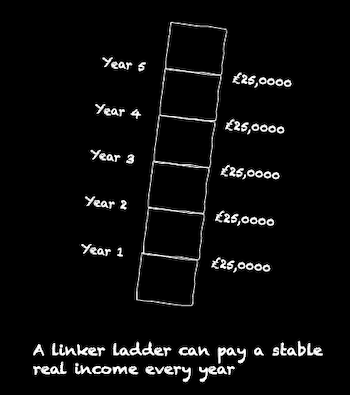I was surprised to hear my landline ring. The number is only known to The Accumulator, my accountant, and my girlfriend.
And none of them ever wants to speak to me.
Sure enough, when I found the handset – hidden beneath a throw thrown over several months’ of FTs – their abstinent track record was maintained.
“Hello? Am I speaking to The Investor?” enquired a chirpy American voice down the line, as if this was still the 1990s.
I confirmed that I was he.
“Bob Leigar has heard about your website Motivator and he thinks you guys are just the talent to come up with a spiritual sequel to The Big Short – which is still the best movie ever made about finance, and not only because I’m a simp for Christian Bale even with his hair cut like a pudding bowl. Bob will be in London on Wednesday. Can you have your pitch ready by then?”
It seemed rather presumptuous. I hadn’t even had my porridge.
But you know… Americans.
“Why not,” I assented in my jauntiest English accent. “See you then!”
The stage is set
We were to meet Leigar in the bar of The Langham five days later, and when the day came Team Monevator was there early. Me in the suit I’d bought in 2015 when I thought we might win Investing Blog of the Year at the British Banker awards. The Accumulator in one of his trademark boiler suits – thankfully a lightweight autumnal number.
Still, he didn’t exactly look up-and-at-em.
“Is that the best you can manage when Tinseltown comes calling?” I hissed, even as Bob Leigar and his entourage entered the room and filed towards us.
“No compromise!” shrieked TA, raising his fist like Wolfie from Citizen Smith.
Leigar clocked the gesture, and paused. Then a big toothy smile engulfed us all. It was as if somebody had turned on a second set of lights.
“Colin Kaepernick fan, eh?” the famous Hollywood producer grinned. (I had of course googled Leigar and checked his bona fides). “Cool cool. We’ve kind of moved on stateside, but hey, that’s why we love you chaps in the old country. You won’t be hurried, right?”
On that note, he sent off one of his apparatchiks to find out “what the heck” had happened to the matcha latte he’d ordered 74 seconds ago.
Then we settled down to business.
“Okay, so I assume Cindy, Chad, Miguel, Barb, and Ming Tan have got you up-to-speed on why we think it’s time to make a sequel to The Big Short,” said Leiger, after Cindy, Chad, Miguel, Barb, and Ming Tan had taken their seats around him, leaving me and TA to perch uncomfortably – and without touching – on the remaining footstool.
“Not rea–” I began.
“Great!” interrupted Leigar, and everyone nodded and congratulated each other on a job well done.
“To recap…” Leigar continued, “…Bitcoin is back above $40,000. The bull market is on again, and nobody even went bust in the bear. Well apart from my bank in California but I hated those bastards anyway. Seriously, who doesn’t go bankrupt a couple of times making movies? It’s practically a Hollywood tradition. But still those creeps wanted their money back. Screw them!”
He was quietly mashing one hand made into a fist into the open palm of his other hand.
“What was I saying?” he wondered.
“The movie!” chipped in Cindy or Barb.
“The movie, that’s right! Well we’re not here just for the warm tea and the rain, and definitely not for the matcha latte,” he said, looking around before continuing, “We’re here to make the best investing movie since The Big Short and we think you dudes are the guys to help us.”
“Actually I preferred Margin Call,” mused The Accumulator. “Very underrated.”
Nobody said anything.
Chad and Ming Tan exchanged worried glances.
This is what happens when you bring The Accumulator to the big city. He lacks the necessary social lubricants. He looked ridiculous in his blue boiler suit and I wondered if it would scupper our chances. He came across like some 1970s Chinese peasant smuggling a lot of dead eels and mandarins home from the farm under the plush fabric and it had given him bumps in all the wrong places.
Fortunately at that exact moment Leigar’s drink arrived.
“Hallelujah!” the big shot exclaimed, literally. “Okay, enough chitchat about that arthouse stuff. It’s time for the main event. What you got for us?”
The pitch
It was showtime and I was ready for it. After 17 years of blogging this was our chance to bring passive investing to the big screen. Turning the rest of the world onto indexing with a blockbuster movie would make nearly everyone richer.
Including us, at last.
We’d fly on Virgin Atlantic to Los Angeles. In California even TA wouldn’t be able to wear a thermally-padded boiler suit. Meanwhile I could walk the streets where they’d filmed Beverley Hills 90210.
“So we’ve given it a lot of thought and we think we can tell an exciting story in the style of The Big Short,” I said. “You know, we’ll have several key personalities who go against mainstream thinking and yet prevail. They’ll be our countercultural rebels. They’ll get rich by turning their back on Wall Street and The City.”
Everyone nodded and said “yes!” and Chad fist bumped Ming Tan.
But TA prodded me in the ribs.
“Oh and maybe my – ahem – co-conspirator could appear in the movie as an Easter egg,” I mumbled.
“What’s that?” said Leiger. “This guy wants to play the Easter bunny?”
“No no, an Easter egg! A cameo appearance for those in the know? Like how Richard Thaler appeared in The Big Short to explain synthetic CDOs.”
Ming Tan’s hand shot up.
“Ming Tan!” staccatoed Leiger. “Hit me!”
“Well, with the cameo, aren’t these two MoneyRater guys anonymous?” she said.
She turned to look at us.
“Isn’t that why you’re both wearing dark glasses indoors? And isn’t it why that guy is dressed in a romper suit with a big red pirate’s beard?”
“It’s a good point,” said Leiger thoughtfully.
He leaned in and looked at me and I imagined his tanned and chiselled face reflected back in my jet black knock-off shades.
“Have you guys really done your research?” Leiger said. He sounded peeved.
Now Miguel’s hand was raised.
“Miguel!”
“Yes, and who is this guys’ people to reach out to?” he asked. He had his mobile in hand and was ready to take a number. “If we’re going to book him for a cameo then I want to get that ball rolling ASAP IYKYK?”
“Sorry?” I said. “Eye why kay why kay? Is that an agency?”
“FORGETABOUTIT!” thundered Leiger. “Tell me about the heroes! Tell me why we should make this goddamn movie!”
Putting on the Rizz
“Okay, okay,” I said, soothing the air like I was caressing an invisible pony.
I admit I was flustered. I knew we were missing the moment.
So I powered-up and went for it.
“Okay, the chief protagonist is this guy Toby Smith. We first meet Toby in 2002 when a financial advisor is trying to sign him up to an expensive active fund. The IFA tells him he is sure to get rich, and coughs and suggests golf when Toby asks why he’s also paying an upfront fee of 5%. Or maybe tennis, says the advisor. But Toby sees through him, and instead he invests in a range of tracker funds via a cheap online platform. Over the next 21 years Toby achieves market returns that beat 90% of active funds, and as a result he is able to retire early. And maybe we could show how his IFA had to become a caddie, too.”
Bob showed no sign of emotion and his team looked riveted, so I continued.
Action!
“Next, we get a burst of excitement,” I said. “In fact one of our heroes overcomes a big gap!”
“Now that’s what I’m talking about!” shouted Chad, fist bumping Ming Tan again and causing the other people in the bar to look over. “The Big Short meets Mission Impossible 5! Woo-hoo!”
“Exactly!” I lied. “Only this is more about a concept known as The Behaviour Gap–”
“Hey I think I’ve been there,” said Cindy. “It’s near Death Valley, right?”
“Er, well anyway our second hero, Jane Jones, she sees all her friends getting into online investing forums, and later social media and Reddit, and they trade in and out of the market and chase all the hot funds. But Jane just ploughs her money into a global index fund, month in, month out, year after year.”
“And…?” said Leigar. He didn’t sound exactly giddy.
Then again, I wasn’t sure if he should? This was his place of business, after all. I wouldn’t be tap-dancing if I were at the office.
“And – Jane beats the average annualised returns of all her friends by 2% a year just by doing nothing!” I concluded with some satisfaction.
Nobody said anything.
“Whereas all her friends’ activity comes to naught!” I added. “Well, 2% less than nought, really.”
I chuckled and TA snorted.
Adult content
“And… that’s it?” asked Leigar after what seemed like several hours. “That’s your pitch for The Big Short 2?”
“Actually, on that…” I said, “… we were thinking we could call it The Big Shrug. Kind of ironic, yeah?”
Barb didn’t seem convinced, which was better than Leigar who was trembling.
“Guys,” Barb chimed in, “I think where Bob is disconnecting is that it’s 2023 and audiences are finally getting hyped about going to the theatre again after all the China flu et cetera and well this pitch doesn’t really seem like a movie. More like a kind of blog post full of in-jokes.”
Leigar raised his eyebrows.
“Haven’t you got anything more dramatic?” Cindy added, between blowing big pink bubblegum balloons.
“For flub’s sake,” muttered TA at my side. “Go on! Tell them about March 2020. The climax!”
Hmm. We’d argued about this.
The Accumulator had wanted me to shoehorn in a mention of his blog article about how passive investors shouldn’t sell in a panic. The one he’d posted at the depths of the Covid crash of March 2020.
I agreed that staying the course through thick-and-thin was passive investing 101. But his admittedly legendary post just didn’t seem very cinematic to me.
Nonetheless I outlined the scenario to Leigar and co.
“And all this happens on the Internet?” the famous Hollywood producer deadpanned after I’d finished.
“Well, in his spare bedroom in reality,” I said. “But we can cut between him sweating and taking his dog to the vet while urging me over the mobile to publish the piece. Artistic license, you know?”
Roll credits
Leigar sighed and stood up. As if they were attached by strings it pulled the others up with him.
“Don’t call us,” the movie man said. “We’ll call you. But really – don’t call us.”
They all turned and began to file out of the room.
“Hang on!” I pleaded. I sensed we’d fluffed somewhere. “Did I mention how in the article he swears?”




![What cheap investment trust should I buy next? [Members] post image](https://monevator.com/wp-content/uploads/2023/05/Moguls-Main.jpg)